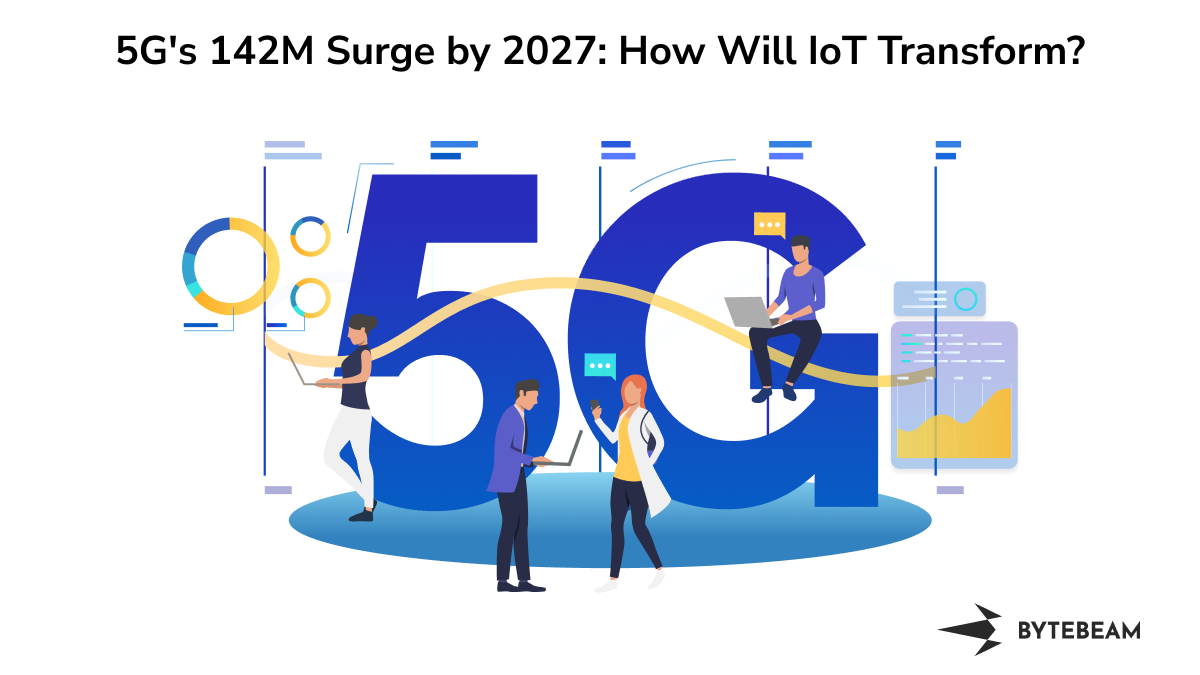5G's 142M Surge by 2027: How Will IoT Transform?

5G goes beyond speed and enhanced mobile connections to shape the future of connectivity. As reported by a study conducted by Juniper Research, global 5G IoT roaming connections are predicted to see a staggering rise from 15 million in 2023 to 142 million by 2027.
So, what does this mean for the global connectivity landscape and the burgeoning Internet of Things (IoT) market?
Rapid Growth on the Horizon
The growth trajectory paints an impressive picture: a nine-fold increase in just four years. By 2027, 5G IoT roaming connections are expected to account for over 27% of all 5G roaming connections. One might wonder: what's fueling this remarkable growth?
1. Expansion of 5G Standalone Deployments
The primary catalyst driving this uptick is the expansion of 5G standalone deployments, particularly in West Europe. Unlike their non-standalone counterparts, standalone 5G networks harness next-generation network cores, which translates to superior network speeds and significantly reduced latency for 5G IoT roaming connections.
Elisha Sudlow-Poole, the report's author, underscored the importance of network operators leveraging these standalone 5G networks to augment the performance of roaming connections. The enhanced network functionality makes a compelling case for roaming agreements, fostering the roaming business model among IoT users.
2. West Europe: The Epicenter of Growth
Interestingly, West Europe, which is home to just 5% of the global populace, is projected to account for a significant 21% of global 5G IoT roaming connections by 2027. This disproportionate growth can be credited to operators in the region proactively launching 5G standalone networks, inducing IoT users to embrace roaming agreements.
Maximizing Revenue with Value-Added Services
The rise of 5G IoT roaming connections comes with its set of challenges, notably revenue leakage. Revenue leakage refers to the loss of potential revenue due to gaps or inefficiencies in business processes, often going unnoticed over time. To mitigate this, the study underscores the importance of introducing value-added services and advanced analytics tools.
Harnessing the power of artificial intelligence, roaming analytics tools can efficiently sift through the massive amounts of data spawned by 5G roaming connections, in real-time. Embedding these tools into platforms helps network operators offer more value and settle payments quickly for everyone.
Benefitting Key Verticals: The Case of Autonomous Vehicles
5G IoT roaming connections are growing rapidly, and this will be a major boon for industries like autonomous vehicles, which rely on massive amounts of data. Advanced roaming solutions, such as roaming analytics and value-added services, will be essential for meeting the unique needs of these industries and ensuring a seamless roaming experience.
Global Impact on Industries
The surge in 5G IoT roaming connections is a game-changer for industries worldwide. Let's see how it's shaking things up in healthcare, manufacturing, agriculture, and smart cities:
1. Healthcare:
In healthcare, 5G IoT is a lifesaver. It makes remote patient monitoring and telemedicine a breeze, saving time and improving patient care. But, we can't ignore data security concerns and privacy issues. Protecting sensitive medical info is a must.
2. Manufacturing:
Factories are getting a facelift thanks to 5G IoT. Machines talk to each other, reducing downtime and boosting efficiency. Yet, integrating this tech can be pricey, and keeping everything safe from cyber threats is a big challenge.
3. Agriculture:
Farming is getting a makeover too. Smart sensors and drones are helping farmers grow more with less, all thanks to real-time data.But, not all farmland has 5G coverage, and some farmers need a crash course in high-tech farming.
4. Smart Cities:
Smart cities are all about connectivity. 5G IoT means better traffic management, energy grids, and public safety.
However, not every city is there yet. Building the infrastructure takes time and money.
So, 5G IoT is shaking up these industries, offering amazing benefits while throwing some challenges into the mix. The future looks exciting, but it won't be without its hurdles.
Concluding Thoughts
The world is on the verge of a new era of connectivity, with 5G IoT roaming connections poised to skyrocket. This will create an intricate web of interconnections that we must strategize around to unlock the full potential of the IoT and revolutionize the way we live and work.

